Mango leaves will turn brown if the are affected by fungus such as anthracnose, if they are getting too much fertilizer, if they are being attacked by leaf miners, thrips or scale or if they are not getting enough water. Young mango leaves will look naturally brown or red which is completely normal and they will turn green over time.
This article will explore why mango tree leaves turn brown and what you can do to solve each problem easily at home.
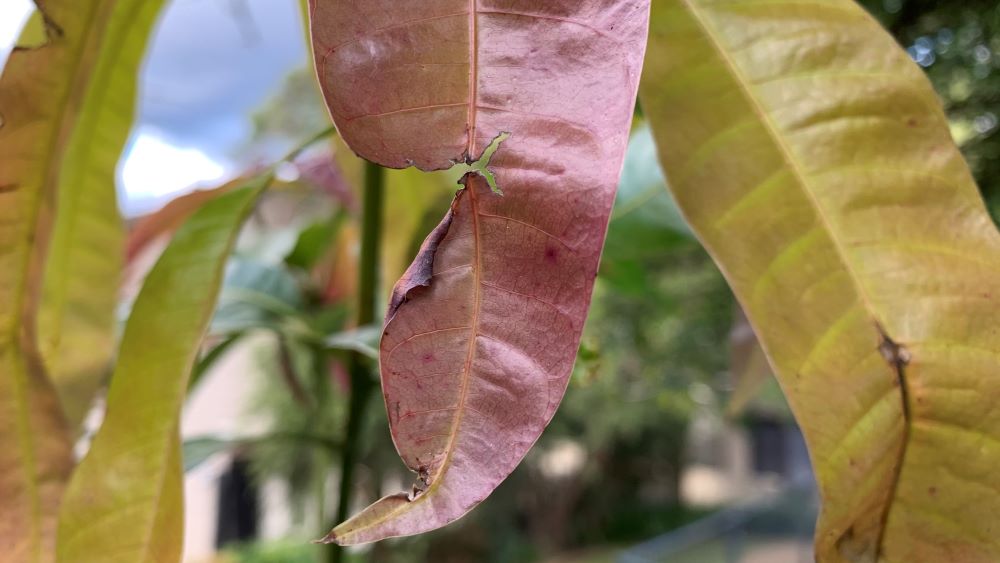
7 Reasons mango tree leaves turn brown
Here are the top reasons why mango leaves turn brown and how you can solve each one quickly and easily.
1. Fungal growth
One of the top causes of brown leaves on mango trees is fungus. One of the most common fungi that will infect mango leaves is anthracnose. This fungus will cause the leaves on mango trees to turn brown. This will often start on young leaves and spread to older leaves.
This is a fungal infection that can cause the leaves to turn brown. It can spread from old plant material or be splashed onto the leaves from the soil when watering.
This fungus can be treated with a copper based fungicide spray. It is important to avoid the spread of this fungus to other plants. It can spread to other fruit, vegetables and even to some grasses.
Throw any mango prunings affected by the fungus straight into the bin and not in your compost. Avoid watering the plant on the leaves and trim off leaves and stems that are close to the ground. This will help to prevent the fungus from being splashed onto the mango tree.
2. Young mango leaves
It is important to note that young mango trees can start off looking brown. These new leaves will start off a dark red or brown and then will gradually turn green. As the new leaves are exposed to more sunlight the chlorophyll will develop in the leaves turning them green.
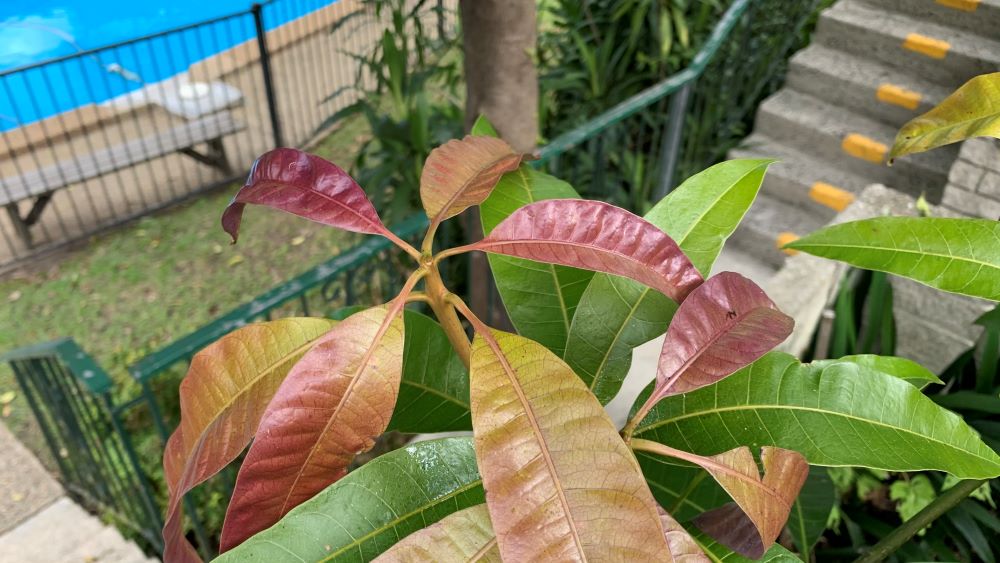
Young leaves will start off a brown color on mango trees and this is completely normal. The leaves will gradually turn green if the plant is getting the water, nutrients and sunlight it needs.
3. Fertilizer burn
Too much fertilizer or fertilizer burn can cause mango trees to develop brown leaves. This will usually start on the tips of the leaves and spread further down the edges and to the center of the leaf.
Giving mango plants too much fertilizer can quickly cause leaf damage. Synthetic fertilizers with high amounts of concentrated nutrients can cause burn. Young or newly transplanted mango trees are more susceptible to this damage.
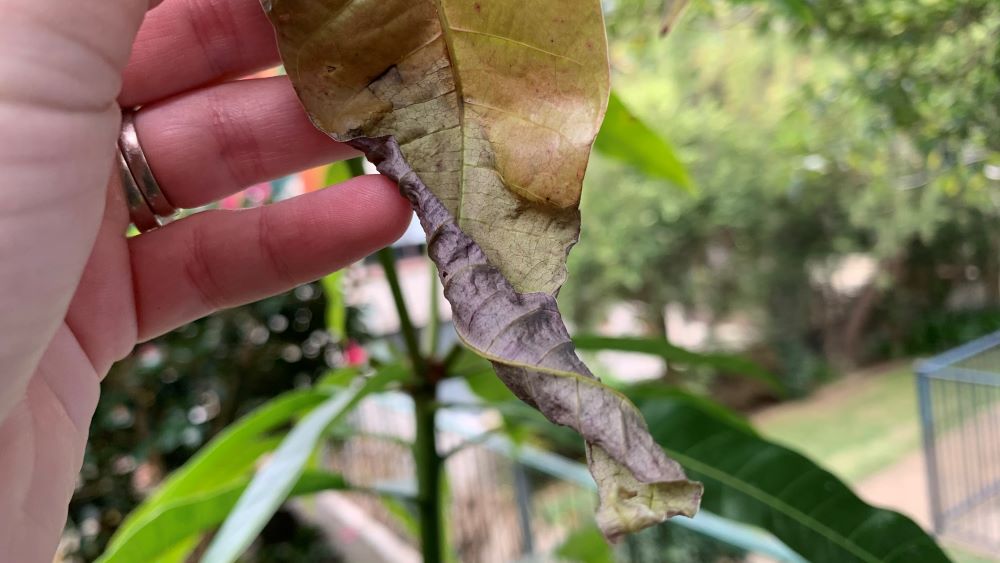
Feed your mango tree with a natural organic fertilizer like pelleted chicken manure. Add a small handful at the start of spring and the start of fall and you will not burn the roots. Avoid giving fertilizer to newly planted mangoes for around 4 weeks until the roots repair and start to establish.
Avoid giving mangoes too much synthetic fertilizer. Always read the packet and follow the instructions. Too many nutrients or minerals can quickly cause the leaves to turn brown on the edges.
4. Salty irrigation water
Mango trees that are being watered with salty or saline water can develop brown leaves. If you are watering your mango with bore water then it can be too salty to too high in minerals.
To fix this problem flush the plant out with fresh water. Collect rainwater or use tap water if it comes from a different source. Potted mango plants can be flushed out with distilled water. Wash the plant through until the water drips out the bottom of the pot.
5. Pests attacking the leaves
Pests including caterpillars love to chew on mango leaves. They can often be found sitting on the leaves during the day and chewing holes in the leaves. You can also see chew marks on the edges if caterpillars have been nearby.
Other pests that can attack mango trees include beetles, moths, thrips and scale. Mango leaves can also be attacked by aphids which will suck the sap from the leaf veins. Treat sap sucking insects on mango trees with neem oil. This natural oil extract can be sprayed on the leaves and bugs and will get rid of them quickly.
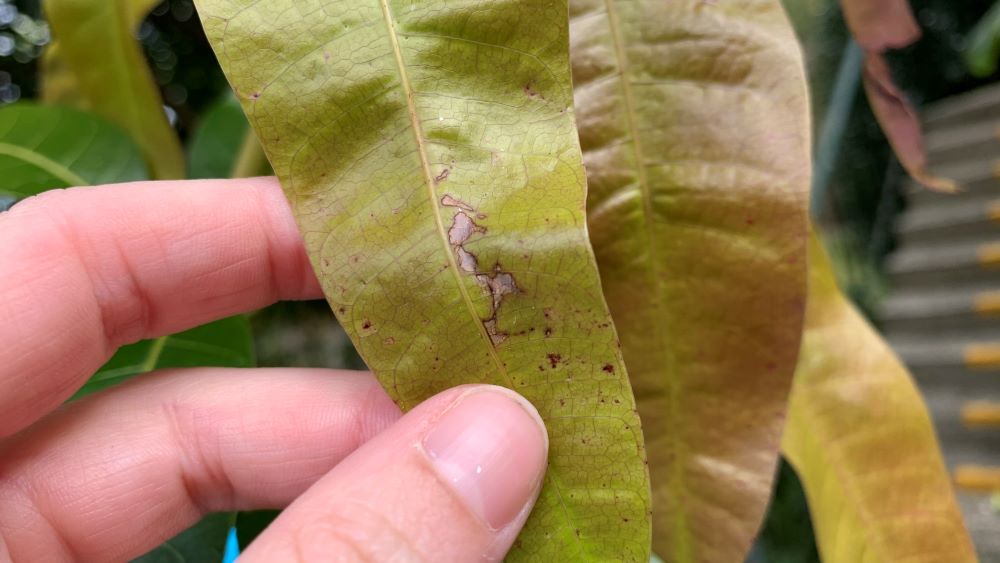
I will flick caterpillars off with a small spade so I don’t touch them. This will also work for snails and slugs which can be flicked into a soapy bucket of water or fed to your chickens.
6. Underwatering
Underwatered mango trees can quickly develop brown leaf edges and tips. These tropical plants love regular water over summer and hate drying out. Large mango trees will send down roots to reach deeper ground water keeping them happier over summer.
Young mango trees however will not have access to deep water and instead will be more reliant on you to keep them moist. Plant new mango trees in spring to give them a chance to establish before the hot summer weather hits.
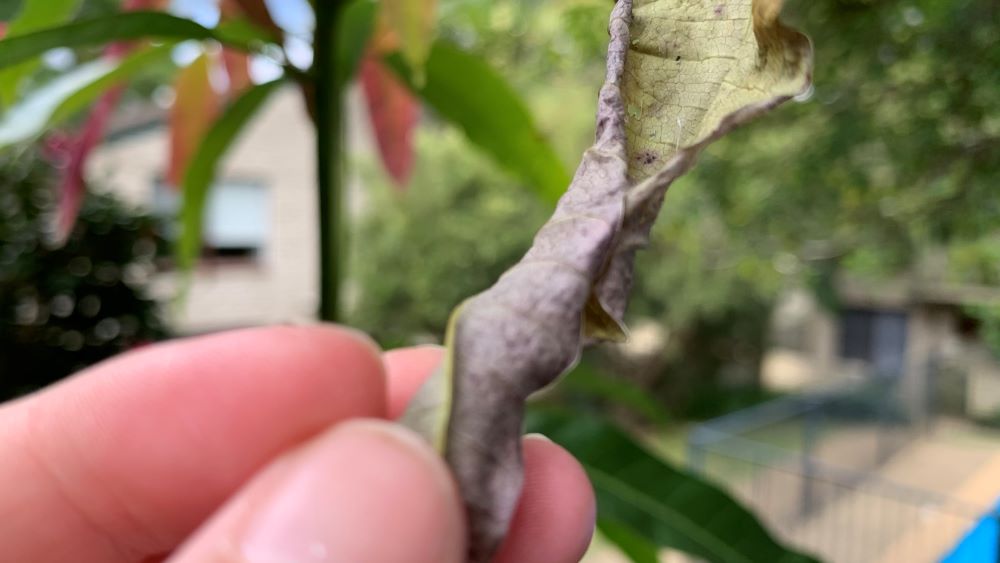
Surround the mango trees with 3 inches of bark or sugar cane mulch. Water them regularly when the weather is hot so the growth rate doesn’t slow. Check the soil with your finger and if it is dry 2 inches down, water the mango deeply and thoroughly over the root zone.
For more on how often to water mango trees check out my previous article here: How often to water a mango tree | Spring, summer + winter guide
7. Lack of nutrients
Mango trees that are not getting the nutrients they need can suffer and their leaves can turn brown. Mango trees need iron, nitrogen, phosphorus, potassium and calcium to name a few to grow strong and develop healthy leaves. A lack of any specific nutrient will weaken the tree, making them more prone to pest attack.
Feed mango trees with an all purpose, balanced fertilizer in spring and fall. I like to use pelleted chicken manure but you could also use a tropical fruit fertilizer.
Check out mango fertilizers below.

Mango Tree Leaves Turning Brown | Summary
Mango trees are hardy, they love a tropical climate and regular water. They will thrive in full sun and add lots of leaf growth over spring and summer. To keep them growing strong with healthy, green leaves water them regularly, surround them with mulch and feed the with an all purpose fertilizer at the start of spring.
Remember that new leaves on mango trees can look a deep red or brown color which is completely normal.
I am an accredited practicing dietitian, experienced gardener and a dedicated cook. I love writing and sharing my experience so you can learn from my successes and mistakes.
